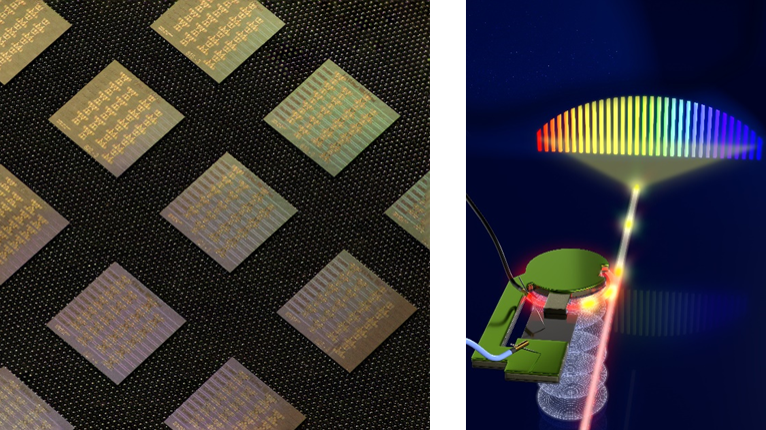Piezoelectric materials, which convert electrical voltage to mechanical displacement and vice versa, are ubiquitous in modern wireless communication networks. For example, a modern cellphone has a dozen RF filters based on Aluminum Nitride (AlN), converting electrical signals to mechanical oscillation or sound waves. Silicon nitride (Si3N4) has emerged as a leading material to build chip-scale microresonator-based frequency combs. At EPFL, we have demonstrated a new scheme for on-chip high speed (sub-nanosecond), low power actuation (J Liu et al. Nature, 2020); combining piezoelectric AlN technology with ultralow-loss Si3N4 integrated photonics. Such capability has not been attained before in integrated photonics, and endows photonic chips with MHz bandwidth actuation. In addition, due to low cross talk among actuators, it enabled us to have multiple actuators on-chip and their high-overtone bulk acoustic resonances made angular momentum biasing possible in a microresonator, creating a magnet-free optical isolator. Such devices can be integrated on-chip for massively parallel FMCW LiDAR or CW laser. This hybrid integrated piezo-optomechanical platform enables the development of nanophotonic devices that are essential in various space-related applications such as wavelength/frequency agile soliton microcombs as an astronomical spectrograph calibrator, free-space coherent communication, frequency comb-based remote sensing and satellite ranging. Building on these recent advances, we seek to demonstrate an on-chip, nonreciprocal pulse router for frequency comb-based based optical ranging, as well as ultra-narrow linewidth lasers with MHz bandwidth tuning as required for fully integrated FMCW LiDAR sources. Our aim is to develop a fully chip integrated FMCW laser ranging sources, both single tone and frequency combs based, which can find immediate use in ground-based, airborne, and space-borne LIDAR systems.

